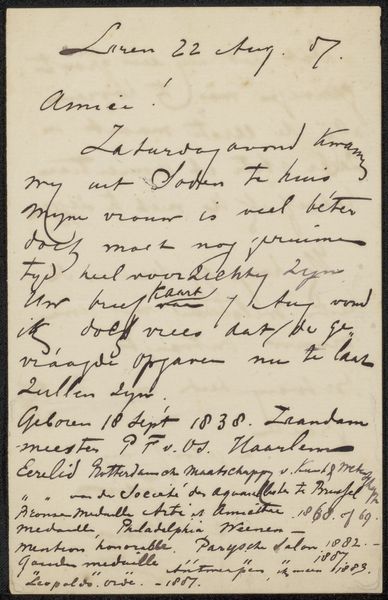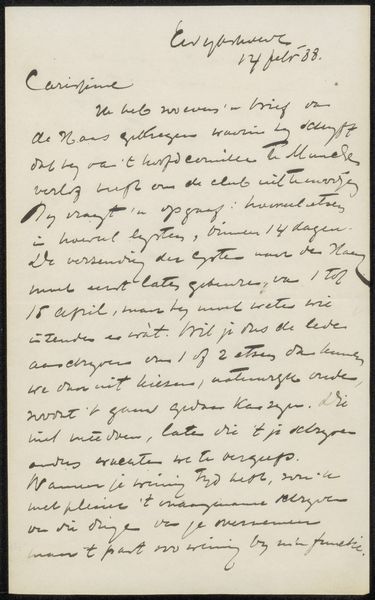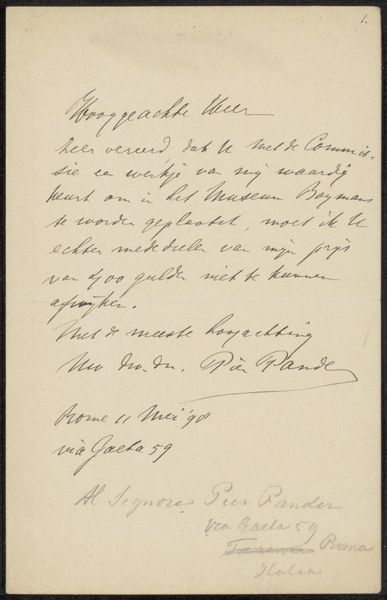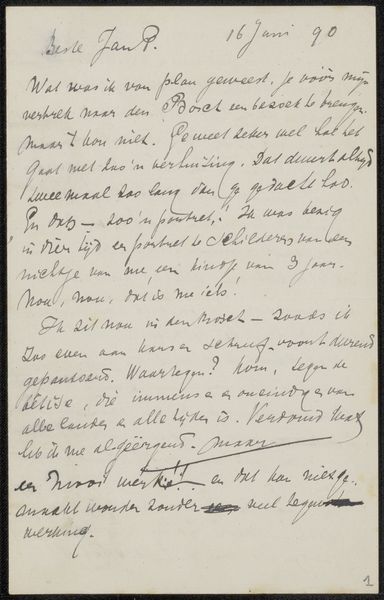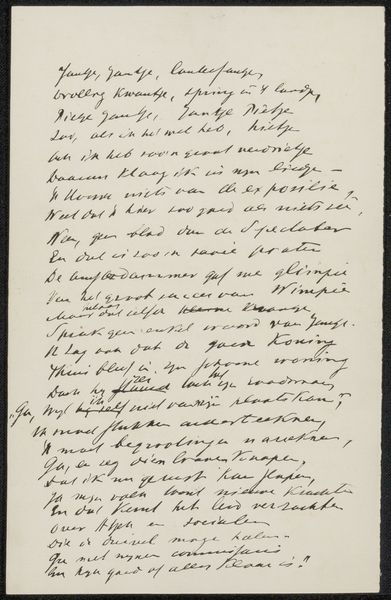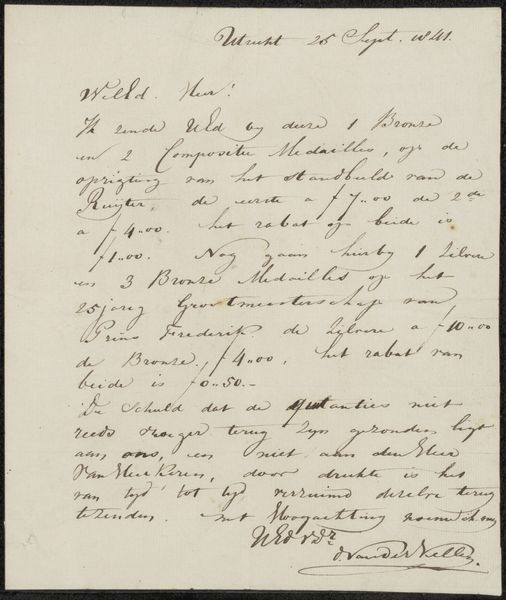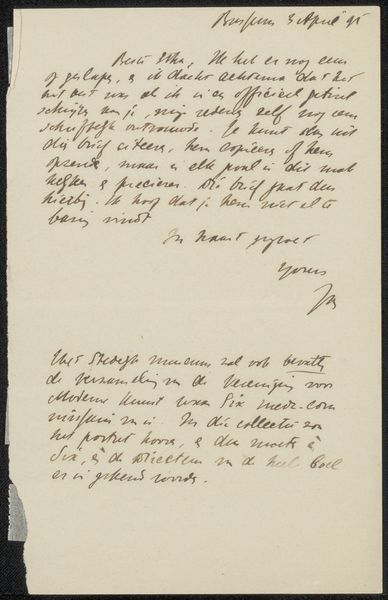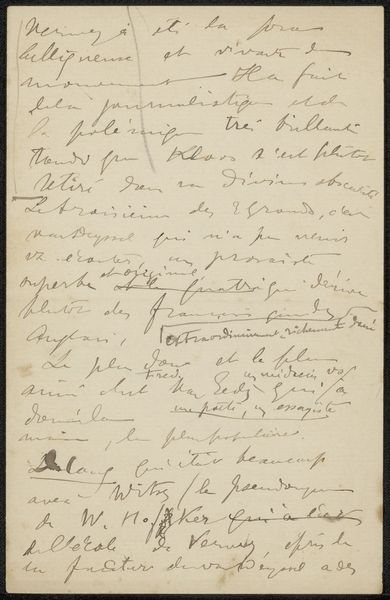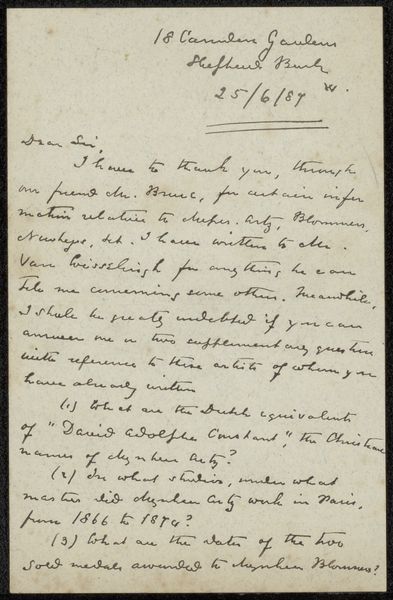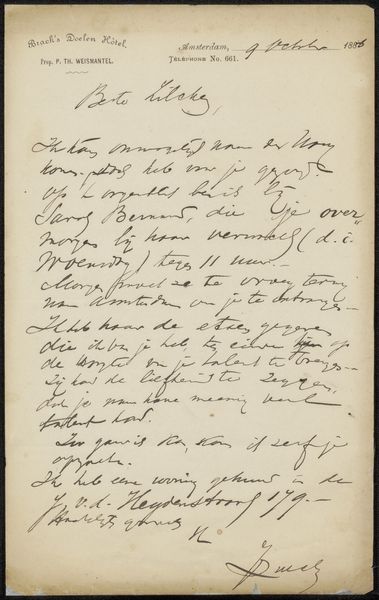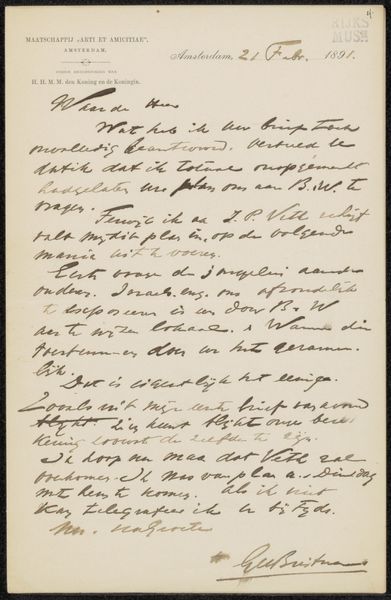
drawing, paper, ink
#
drawing
#
pen drawing
#
dutch-golden-age
#
paper
#
ink
Copyright: Rijks Museum: Open Domain
Curator: Here we have George Hendrik Breitner’s “Brief aan Jan Veth,” created between 1892 and 1895. It's a pen and ink drawing on paper. You can find this piece at the Rijksmuseum. Editor: My initial feeling is of intimacy and quiet focus. It's striking how a simple letter can feel so personal, almost like eavesdropping on a private moment. The density of the script creates this feeling of the writer being deep in thought. Curator: Absolutely. What’s compelling here is how Breitner uses a very utilitarian object—a letter—as a medium for artistic expression. Looking at the social and cultural context, letter-writing in the late 19th century was a critical means of communication. This piece connects us to that intimate sphere. Breitner engages here in a conversation, both literal and artistic. Jan Veth was an art critic and an artist in his own right, which could affect how Breitner framed the note. Editor: I'm also interested in how the materiality contributes to the meaning. The deliberate strokes of the pen, the absorbency of the paper; they are fundamental. Also, one could focus on what we’re denied: the actual message, its material qualities such as folds, postage, or evidence of handling, revealing a kind of absence inherent in this method of communication. The choice of black ink adds weight, emphasizing the contrast with the plain paper. Curator: That absence is quite poignant, considering the period's broader issues of social class, labor and accessibility, considering not everyone could afford this level of communication at the time. By preserving it as art, Breitner elevates a seemingly mundane document into something worthy of contemplation, inviting viewers to reflect on questions of accessibility. It challenges notions of which voices and histories get archived and who gets to do the archiving. Editor: Yes. Ultimately, this humble drawing speaks volumes about the relationship between artist, medium, message, and the world in which they exist. Curator: Exactly, and it demonstrates the potent ways even small gestures can embody so much history.
Comments
No comments
Be the first to comment and join the conversation on the ultimate creative platform.
